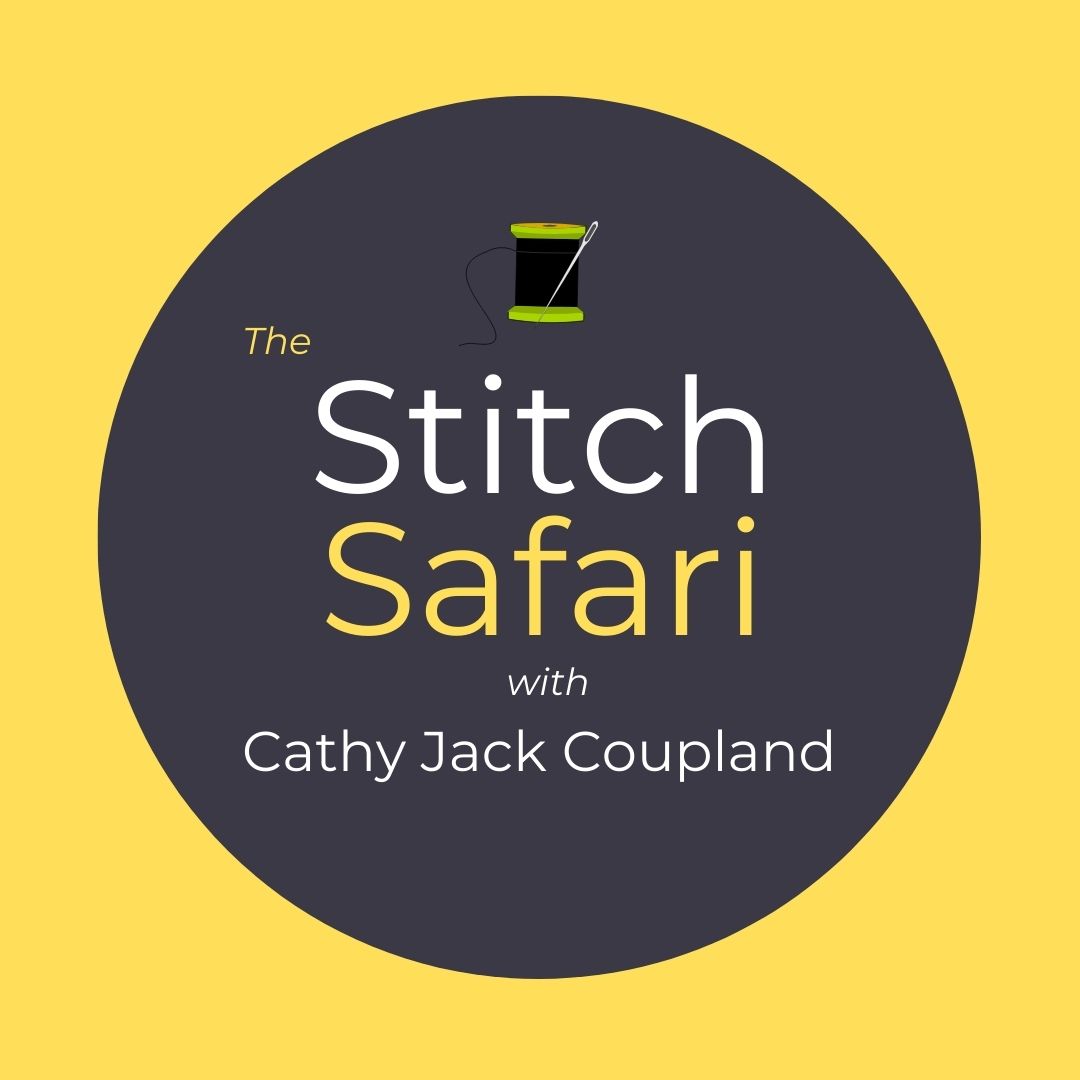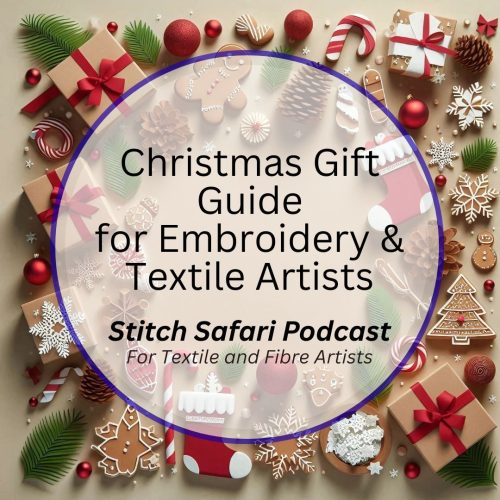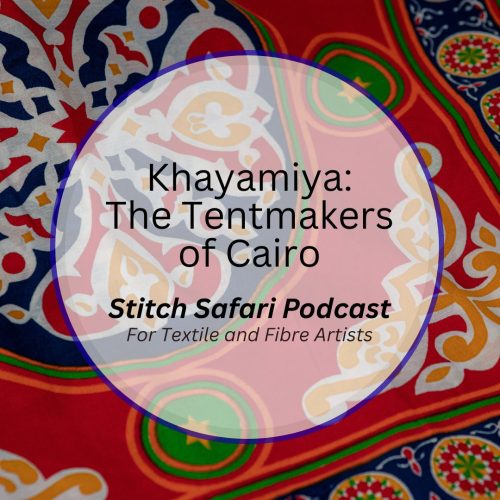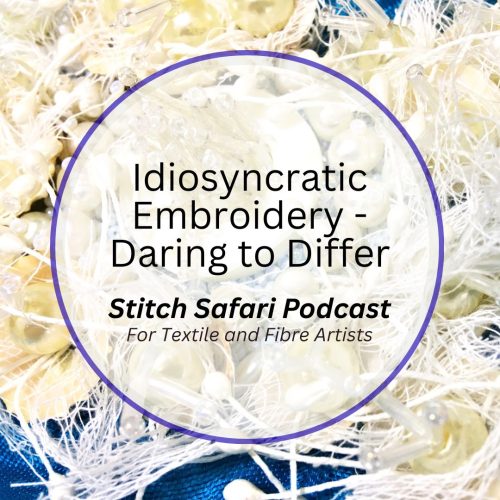In this episode of Stitch Safari, I want to talk about two amazing, exciting and innovative embroiderers.
They were chosen because of how differently they work, highlighting the diversity embroidery offers. But it doesn’t stop there.
They live on either side of the Atlantic Ocean—one in England, the other in America. Both work with needle and thread to create unique and inspiring embroidery.
One works with machine embroidery techniques, and the other, with more traditional hand skills.
They work in divergent worlds of scale, one producing works on the larger-than-life spectrum, the other teeny-tiny, yet both are storytellers weaving magic through their creative, visual narratives.
One is more tradition-based while the other is contemporary, yet the appeal of their work is universal – there’s a seductiveness that draws the viewer in.
One works in a world of charm and enchantment, the other uses abstraction mixed with the mystery of myths, legends and history.
They both work figuratively and with dimension.
Two embroidery artists who love setting a scene and telling a story using their preferred medium of needle and thread. And what stories they tell.
Whether or not you like machine embroidery or small dolls, these two artists are worth studying for their inspiring use of technique and how they apply that to create wonderful narratives – they bring ingenuity, inventiveness, flair and finesse to their art.
Stitch Safari listeners, please allow me to introduce Alice Kettle from England and Sally Mavor from The United States of America.
I’ve been an avid admirer of the work of English embroidery artist Alice Kettle for many years. I have only recently discovered the whimsical, creative world of Salley Mavor, but I am in awe of both these artists.
Let’s learn more about them now.
Intro
Over the years I looked to Alice Kettle for inspiration on technique, eventually undertaking a Masterclass with her in Melbourne where we explored design and driving the most from our domestic sewing machines.
We were also privileged to attend one of her lectures and see several pieces of her amazing artwork. This was at the beginning of her work with multi-head machines and it was an amazing experience.
So when I think of Alice Kettle’s work I immediately think of sinuous female figures or nymphs that seem to dance, jump or break free from their spaces rather than being contained by them or the magic of a machine-stitched alter frontal worked in 1992-94 for Winchester Cathedral that seems to be a part of the long-ago painted walls behind it.
Alice Kettle studied fine art at the University of Reading before taking a postgraduate diploma course at the famous Goldsmiths College. Several grants and residencies followed, notably at the Canberra School of Art in Australia. Alice is now a Professor of Textile Arts at the Manchester School of Art.
The very basis of Alice’s work is the exploitation of textures and effects made possible through harnessing a mechanical process for intuitive and creative ends – and that sentence says it all.
Many of her works are the size of huge tapestries and often include narratives featuring lithe and graceful figures. In the book ‘The Eye of the Needle: The Textile Art of Alice Kettle, Audrey Walker’s preface states this: the embroideries are always figurative, and many layers of reference are contained within each piece. They reveal subtleties of imagination and execution which refute any notion of embroidery as ‘mere decoration”.
The book begins with a lyrical display of Alice’s words: the figure is the essence of my work, the human content, the emotional link.
It is now difficult to imagine Alice Kettle’s work without that human element, writes Dr Jennifer Harris who goes on to write about the evolution of Alice Kettle’s style – firmly anchored in English tradition harking back to the period of medieval church embroideries known as Opus Anglicanum and continuing through to William Morris’ 19th-century designs for large embroideries.
The mainstay of Alice’s work is firmly based in the 20th century through her use of the modern sewing machine and new fibres to express contemporary experience – and it quickly became apparent that machine stitch was best suited to her intuitive style enabling broad, painterly sweeps of colour.
But Alice also cleverly mixes colours through the needle and bobbin – incorporating metallics to apply lustrous strokes in much the same way as a painter working on canvas – resulting in a refined shimmer across the work.
This tactile medium allowed Alice to escape the two-dimensionality of most embroidery by over-stiching to create rippling three-dimensional surfaces that form peaks, hollows and shadows.
Released from the canvas, Alice uses embroidery to become an expressive medium and means for the exploration and realisation of ideas and feelings rather than a purely functional skill.
Dr Harris goes on to comment that with her background in painting and her remarkable physical stamina, Alice gained the confidence to cover large areas in ways that were rather alien to the medium.
Alice married an innate sense for textiles with her painter’s concern for line and colour – this was her medium – this was her identity.
Alice states: ‘At the back of my mind were the lessons learnt from painting, to vary the types of marks and the scale of brush strokes, to balance bold areas with dynamic lines. But this was a different kind of mark-making, more like constructing. I remember feeling a mixture of excitement and frustration at how slow it was compared to painting. I got quite carried away with the pleasure of handling material, of watching bold lines of thread appear. But getting the machine to work against its will was a struggle.’
At the beginning of the book is a wonderful image of Alice working at her machine with a huge swathe of partially stitched fabric covering the entire table, under the needle – even now, it seems incongruous to look at that image and think anyone could work the amount of machine stitchwork required to cover that fabric.
Whether inspired by mosaic-style pattern making, Matisse’s wonderful paper cut-outs, Russian icons, medieval tapestries or Giotto’s paintings, the machine is pushed to its limits because she was determined to make it work for her.
Alice developed the technique of using the sewing machine as a painting and drawing tool that has become the hallmark of her work – the machine has become an expressive and mechanical tool, by removing the foot and setting all dials at zero – sometimes even working from the back using thicker threads in the bobbin incorporating even more texture.
The needle is set free to move in any direction working with two or more threads through the needle enabling a subtle mix of beautiful colourways.
Areas of work are often cut and pasted or reworked patching in new pieces of fabric. Fabric that has become too thick and unworkable is often cut away and reworked.
This is where traditional craft media is used with integrity to express fine art sensibilities.
Alice Kettle is, without a doubt, the world’s foremost practitioner of contemporary machine embroidery.
The Eye of the Needle, The Textile Art of Alice Kettle, Published in 1995 by Telos Art Publishing – a wonderful addition to any textile-related library.
Now let’s delve into a completely different stitched world- that of Salley Mavor and her Wee Folk Studio.
It’s a world of enchantment and bewitching charm – in the form of hand-made miniature dolls taking on names such as Harvest Folk, Blossom Fairies, the Driftwood Clan, Woodland Folk, Sherwood Forest and Nursery Rhymes to name a few.
Now this is not an area I’m normally interested in, but Salley’s work is remarkable in its ingenuity and execution.
So Salley is a discovery for me – but once seen, you cannot forget her work and ability to tell a story with a needle and thread.
Her work is appealing. Is it directed at children? I’m not so sure, because every embroiderer I know would be seduced by this work. What I do know is that Salley makes the most of her embroidery by using it either for illustrations in books or stop-motion videos.
Salley states that as long as she can remember, her favourite way of working is in mixed media, allowing her to explore and play with different materials and techniques.
The commonality here is a needle and thread used to wrap and stitch felted and found objects together to form three-dimensional scenes in relief that are then photographed and reproduced in picture books, posters, cards, and stop-motion videos.
Salley Mavor studied illustration at the Rhode Island School of Design where her passion for adding texture and objects to her work compelled her to explore and create three-dimensional work, making dolls, animals and people with movable limbs and styling them into scenes to be photographed.
Techniques experimented with included fabric relief sculpture, dyeing fabric, wrapping wire, adding found objects and constructing wooden elements for her narrative scenes – this work became like a miniature stage set with scenery props and characters that told a story, jump-starting her career as the illustrator of several children’s books.
Salley is self-taught taking an intuitive, experimental approach to the challenges of the creative process finally putting together a fairy doll kit and launching a business named Wee Folk Studio.
The kits were popular and were soon followed by her book Felt Wee Folk: Enchanting Projects published in 2003.
Recently I purchased Felt Wee Folk New Adventures, published by C & T Publishing in 2015, showcasing 120 enchanting Dolls – the ingenuity, storytelling and photography are stunning – if this is an area of interest to you, then I highly recommend this book.
With clear, concise instructions and fantastic photography you are given basic directions in her methods of doll making, painting faces, creating heads, hair and hats and garment making for fairies and people.
The work is incredible.
But it’s the staged scenes, so beautifully rendered and photographed that bring the entire story to life showcasing Salley’s exceptional attention to detail.
Do go to Salley’s website weefolkstudio.com – there’s a taster of her Summertime series on her homepage – it’s a tour-de-force of thatched roof making, huts and doorways, heavily stitched with straw thread and embroidery floss using some very unusual base materials.
What a privilege to be able to introduce these two incredibly talented artists in this episode of Stitch Safari, displaying the diversity and application of stitching techniques – promoting both hand and machine embroidery in their stunning creations.
And I say a privilege because there’s just so much going on in the world of embroidery it’s very easy to be sidetracked by the next ‘new’ idea or technique.
Both these artists have been working at and honing their craft for many decades – and it shows.
The precision of Salley’s work and the expressive freedom of Alice’s bold figure work and scale are, without doubt, attributed only to master embroiderers.
Study their work because they both give so much to embroidery.
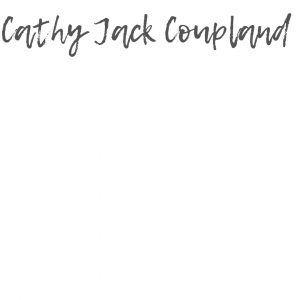
Sources: The Eye of the Needle, The Textile Art of Alice Kettle, Published in 1995 by Telos Art Publishing

